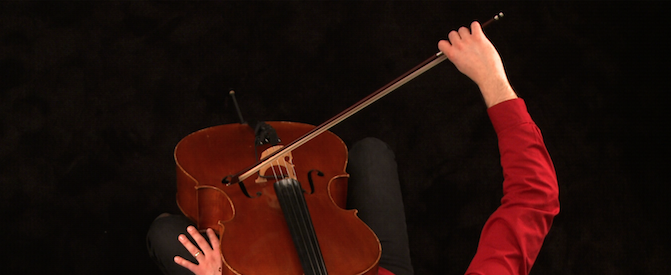Getting to Know Your Cello Bow

There it is – your cello bow. It's with you whenever you play, unless we're talking pizzicato. But for now let's just focus on playing with a bow.
So how much do you know about your cello’s best friend which helps make such a beautiful noise?
When you think of making expressive music on the cello, you may focus solely on your instrument, and with good reason. With its size and all of the components that factor into its creation, it can be difficult to envision anything else that can affect the sound.
Smaller, delicate, separate, yet no less important, your cello bow plays a crucial role in determining the music you can make.
It's amazing what a difference a bow which is both well-built and well-suited to the player can make to your sound. It can be just the thing you need to step up your sound.
The price of a bow ranges from $100 to more than $1000, so you can imagine that there's quite a bit of difference when it comes to quality.
However, let's be clear: a great cellist can use a poorly made bow and still make great music.
Similarly, an expensive bow will not help a poor cellist as much as they would hope.
So it's not the bow which makes the musician. A quality cello bow can however make your sound richer and smoother, and also increase its sound projection to make it louder.
About Your Bow
How much do you really know about your cello bow?
The longer, wooden part is called the stick and tends to be made of either Brazilwood, a hardwood called Pernambuco, or carbon fiber.
be made of either Brazilwood, a hardwood called Pernambuco, or carbon fiber.
The thin strings, called the hair, of the bow, is usually made of white horsehair. Heat and humidity can cause the hair to stretch or tighten, which can affect the playability of your bow. Depending on how often you play, you may want to get the bow hair replaced once or twice a year.
The tip of your bow, called the frog, holds the hair in place. It tends to be made from ivory or bone.
Bow Weight
Do you know how much your bow weighs?
Although it can vary, it usually ranges between 65 and 80 grams. This may not sound like much, but just think about using your bow for an hour or more!
Heavier bows need more effort to maneuver, especially over extended periods of time. But the beauty of a heavier bow is that they can produce stronger sounds with less effort, as the bow grips the strings easier due to the weight.
Flexibility
Two important aspects of your bow are strength and flexibility.
Sure, a stiff bow can help you create a faster response when playing, but the sound could be thinner with less depth. On the other hand, a more flexible bow will help you create a richer, deeper sound, but with a slower response. Which you choose all depends on what you like in a bow.
Choosing the Right Cello Bow for You
Given size, weight, materials, and expense, how do you know which bow is right for you? The answer is: that depends on you. Your choice is a personal one, meaning you need to find a bow that you find comfortable, fits naturally, and meets your budget.
Try out many bows to notice the little differences, and slowly narrow down your choices. Make sure you try the bow where you play most often – at home, studio, or school – so that you get a true sense of what you can do with the bow.
Be patient and most of all, have fun playing that cello!

Learn cello online with Mike Block at ArtistWorks. Click below for more info and free sample lessons!
Related Cello Blogs:








Comments